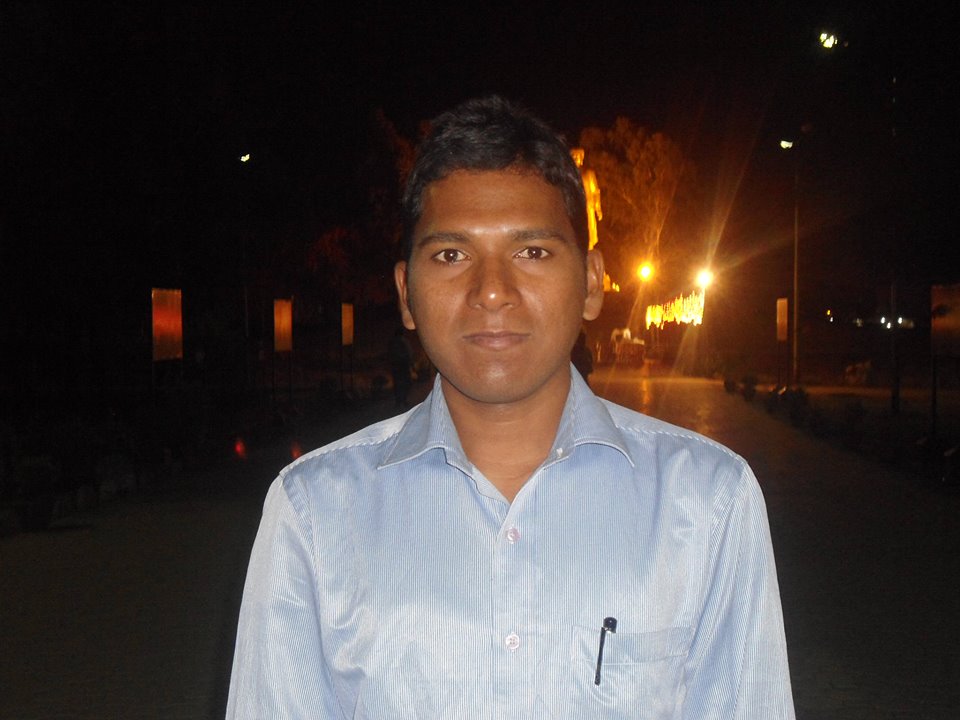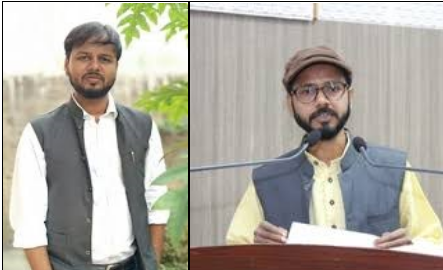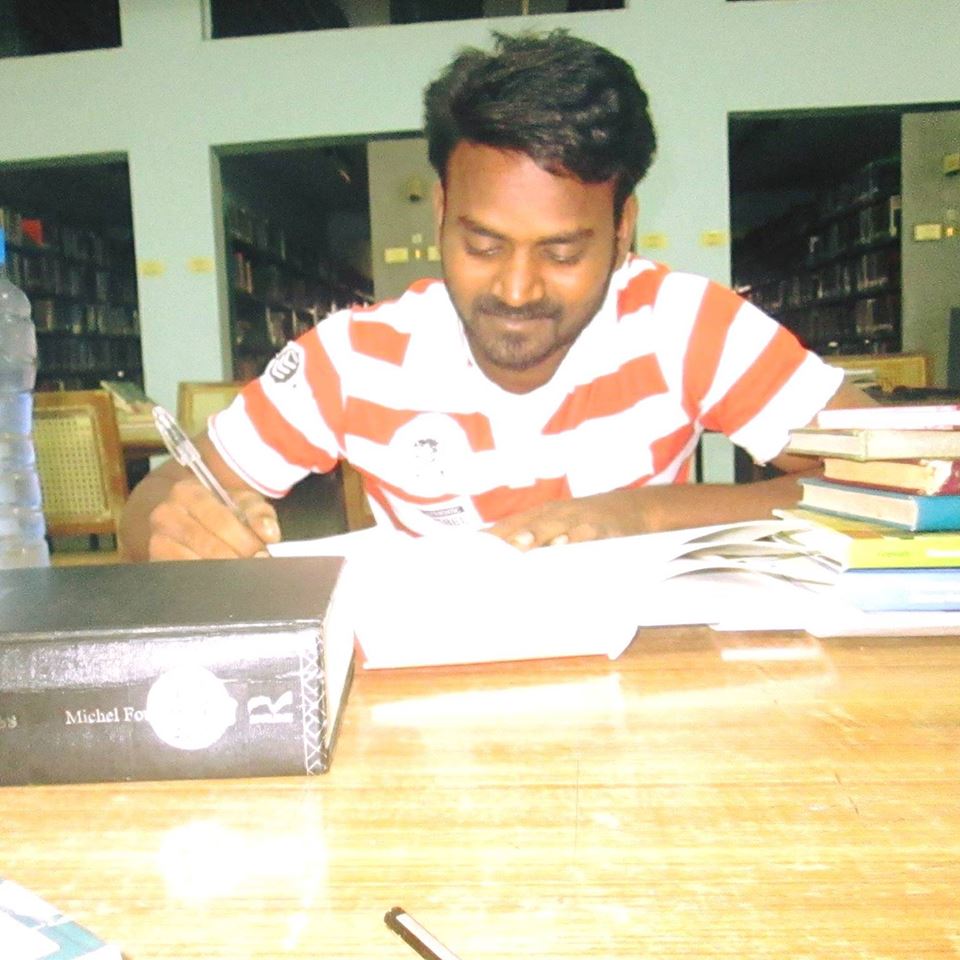Jadumani Mahanand
 The current scenario of Indian society is deeply volatile and violent, instigating gruesome and brutal attacks on Dalits and Muslims. Any concerned citizen will feel anger and frustration, reading everyday about the violence, rape and killings of minorities such as Dalits and Muslims. No method has been left unused, to theorize or write about Dalits in particular. It generally creates some doubts in the mind. Are Dalits systematically persecuted by the upper castes because they are somehow criminal in nature? Or are they born to be raped, abused and killed by upper castes? Or is all this violence just about individual problems? Who are all responsible for this?
The current scenario of Indian society is deeply volatile and violent, instigating gruesome and brutal attacks on Dalits and Muslims. Any concerned citizen will feel anger and frustration, reading everyday about the violence, rape and killings of minorities such as Dalits and Muslims. No method has been left unused, to theorize or write about Dalits in particular. It generally creates some doubts in the mind. Are Dalits systematically persecuted by the upper castes because they are somehow criminal in nature? Or are they born to be raped, abused and killed by upper castes? Or is all this violence just about individual problems? Who are all responsible for this?
With a strong hope, Dalits believe that democracy shall penalize caste criminality. Democracy is an enabling process that can bring significant changes in society, polity and economy, and redress social inequality, poverty and the subjugation of women. On the other side, modernity in India has also revalued the traditional castes, cultures, beliefs and religions. Consequently, both these ideas are attractive to Dalits, as a means of challenging Brahminism and patriarchy. However, in the new modern state, where democracy and modernity have the scope to resist the barbarity of Brahminism and patriarchy, change has been slow to come. They have proved to be inadequate in the fight against injustice, since Brahminical and patriarchal values are perpetuated in ever more subtle, sophisticated, nuanced and violent forms with continued impunity, and this is very visible in contemporary India.
One of the essential features of the caste system is to keep out the ‘other’ while performing its activities. Ambedkar says that caste has no sympathy and charity for the other. To a great extent, caste is the gradation of respect, freedom, hatred and violence. Dalits at the bottom are never able to exercise freedom and equality, but hatred and violence is endemic to their life. In a political democratic setup, Dalits have reached the positions of President, Chief Minister, and Chief Justice of India but continue to be mere official tools without social freedom and self- respect. While the democratic system somehow enables them to battle against injustices perpetrated on them, democratic rights often remain ambiguous, and this helps upper castes and classes secure their religious and caste sanctity.
Understanding Violence
The actions of a person are deeply connected to her belief system. The system may come from the constitution or a religious tradition, or the state. But while state-given rules are concerned with the secular affairs of its people, in a structurally caste-ridden society like India, every social act has religious connotations. To put it differently, actions are deeply religious in nature. They are ‘set up in religious belief’ and practiced as a ‘moral belief.’ The moral may perpetuate violence, killing, rape, abuse and hatred, through its religious justification1. This is inherently present in Hinduism. It is not only the sociology of violence but the materiality, dignity and pride of upper castes to preserve and perpetuate it against Dalits. This sort of violence is intrinsically sanctified in the philosophy of Brahminism, available in religious texts such as the Manusmriti.
The current state of Dalits is an explicit example of violence. After the institutional murder of Rohith Vemula, there has been an upsurge of Dalit movement in India. New and old forms of caste discrimination, violence, and killing have become debatable points, at least for a day or week, and we are finding a few editorials, stories and TV debates between politicians, intellectuals, students and activists. It is not that Brahminical media changed out of interest or for TRP. It changed because it had become a compulsion to publish Dalit news. This is because Dalits are using social media widely to circulate their ideology and their everyday experiences of caste violence. It is important to notice that caste violence and atrocities on Dalits in the last five years came into public notice only because of social media. Publishing news and publishing with content are two different things. All mainstream media is exclusively Brahminical but maintains a hold on public affairs. While Brahminical media has also has a business motive, it can still refuse to give live-coverage to a Dalit mass protest! Can anybody understand this Brahminical pathology? Let us see some instances of selective violence in the last three months:
In April 2016, Delta Meghwal, a 17-year-old Dalit girl, was raped and killed by an upper caste teacher in Rajasthan. In May, a Dalit law student was raped and murdered in Kerala. In June, the dead body of a CRPF man stopped by the upper castes, from being taken through the village in procession. In July, four Dalits were brutally beaten by cow-protectors in Gujarat, for skinning a dead cow. Former chief minister of Uttar Pradesh, Mayawati was abused as ‘worse than a prostitute’ by BJP’s Daya Shankar Singh. A couple was murdered over a debt of 15 rupees in U.P. Ambedkar Bhawan was demolished on the order of the BJP in Maharashtra. The NCB report on caste atrocities explicitly showed that Dalit life was often condemned with rape, murder and hatred. At the same time, the BJP is continuously trying to appropriate Dr. Ambedkar in spite of being the perpetrator in many of these incidents. In response to this, Dalit movements against Brahminism have come into the limelight across India. Strikingly, in many cases of caste violence, the upper castes thrash Dalits, take a video of it and post on Facebook and Whatsapp to warn them to stop activities against Hindu religious sanctity, as preached by the RSS and BJP2.
Larger Question
Some scholars say caste atrocities on Dalits have become normalized and naturalized, a few ordinary concerned citizens are feeling fed up with this, some progressives are showing their sympathy, non-Dalit political parties are politicizing the issue and meanwhile, the upper castes continue to perpetuate violence on Dalits as a part of their religious morality. It seems political power has less importance than social and religious power, and reinforces upper caste impunity to kill, thrash and abuse – despite these being punishable offences under the state. This happens when religious and social forces capture political power. In fact, it is well argued that political democracy is a mere transfer of power from one hegemony to another. However, the power relations of Brahminism are fundamentally different.The upper castes may not be in political power, but their religious power remains to play a hegemonic oppressive role on the oppressed group. I consider caste violence in the present society as having increased rather than decreased. We should not forget that the unreported incidents are double the number of those reported. It is only through social media, information technology and free internet space, that incidents of violence and atrocities on Dalits are being shared widely among them.
Ambedkar says that as long as Brahminism and Patriarchy exist, violence on Dalits and women will persist. The state mechanism cannot ensure justice to Dalits – a democratic state can only provide the scope to fight, and it and can only compensate with grievance redressal. The victims don’t even get any compensation until a case is finalized. A Dalit life can be killed or raped, and in return, compensation would be facilitated without conviction. Ex-chief justice of India, K. G. Balakrishnan often says in Dalit gatherings that justice for Dalits is very difficult in the Indian judiciary. So the question remains, particularly to the ‘reserved’ Dalit political representatives: are they exercising their autonomous political views at least against caste violence and discrimination against Dalits? In contrast, autonomous Dalit politics have the potential to revolt against Brahminism.
Notes
1. https://www.youtube.com/watch?v=VbsAue8wREQ
2. https://www.youtube.com/watch?v=jp2vwvObM7o , https://www.youtube.com/watch?v=F0rgp3pO1ow
~~~
Jadumani Mahanand is a Ph.D research scholar in JNU.










